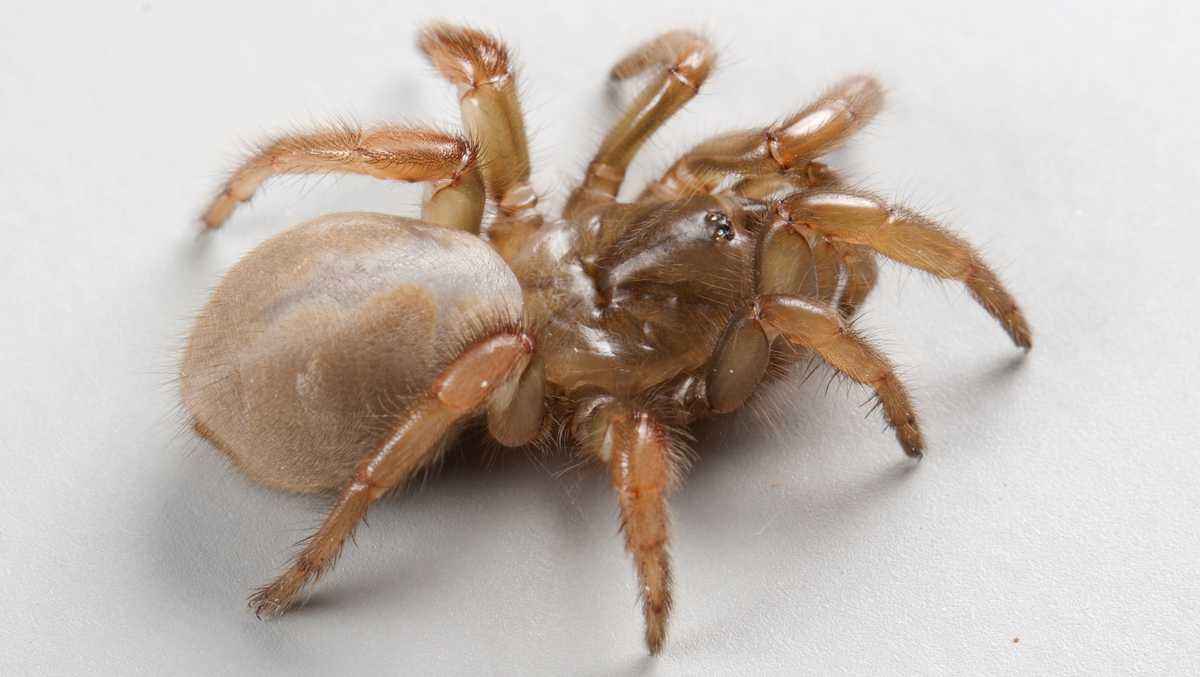TODAY DURING A SPECIAL CEREMONY. RIGHT NOW TO A COMPLETELY DIFFERENT ANIMAL. SCIENTISTS AT UC DAVIS DISCOVERED A NEW SPIDER. CHECK IT OUT. IT’S A TRAPDOOR SPIDER WHICH LIVES ALONG CALIFORNIA’S COAST FROM MONTEREY TO BAJA CALIFORNIA IN MEXICO. WELL, THE SPECIES LOOKS ENORMOUS HERE. IT’S ACTUALLY PRETTY SMALL. LESS THAN TWO INCHES IN REAL LIFE. THE FEMALES SPEND MOST OF THEIR TIME UNDERGROUND I
UC Davis scientists discover new species of spider, just in time for Halloween

Updated: 4:23 PM PDT Oct 30, 2025
Scientists from UC Davis discovered a new species of spider, and the arachnids are found right here in California.The new spiders were identified as Aptostichus ramirezae. They’re a new type of trapdoor spider, and live in California coastal sand dunes.The species likely went undiscovered for so long because it’s a close relative of another native California trapdoor spider, Aptostichus simus, which is also found along the coast from Monterey down to Baja California, Mexico. UC Davis describes trapdoor spiders as small, secretive relatives of tarantulas. The female spiders live their entire lives underground in silk-lined burrows with camouflaged openings. The new species was named for Martina Giselle Ramirez, dean of the College of Science at California State University, Stanislaus, who is described as a pioneering and highly regarded archnologist. A study on the new species was published in Ecology and Evolution by senior author Jason Bond, a professor in the UC Davis Department of Entomology and Nematology, Emma Jochim, a doctoral student in the UC Davis Department of Entomology and Nematology, and James Starrett and Hanna R. Briggs with UC Davis. Read the full study here. The authors note that the new species is at risk, particularly due to a shrinking habitat. Human development, erosion, wildfire and sea-level rise are threatening the species’ homes.“They’re definitely at risk, especially the lineage Aptostichus simus,” Jochim said in a news release. “The new species has a much wider range, but Aptostichus simus is now really only found in San Diego, and projections for sea-level rise in that area are very grim. These spiders are not really able to adapt that quickly to new habitats.”Jochim added that studying the spiders helps humans understand the diversity of the planet and which areas are a priority for conservation efforts.See more coverage of top California stories here | Download our app | Subscribe to our morning newsletter | Find us on YouTube here and subscribe to our channel
DAVIS, Calif. —
Scientists from UC Davis discovered a new species of spider, and the arachnids are found right here in California.
The new spiders were identified as Aptostichus ramirezae. They’re a new type of trapdoor spider, and live in California coastal sand dunes.
The species likely went undiscovered for so long because it’s a close relative of another native California trapdoor spider, Aptostichus simus, which is also found along the coast from Monterey down to Baja California, Mexico.
UC Davis describes trapdoor spiders as small, secretive relatives of tarantulas. The female spiders live their entire lives underground in silk-lined burrows with camouflaged openings.
The new species was named for Martina Giselle Ramirez, dean of the College of Science at California State University, Stanislaus, who is described as a pioneering and highly regarded archnologist.
A study on the new species was published in Ecology and Evolution by senior author Jason Bond, a professor in the UC Davis Department of Entomology and Nematology, Emma Jochim, a doctoral student in the UC Davis Department of Entomology and Nematology, and James Starrett and Hanna R. Briggs with UC Davis. Read the full study here.
The authors note that the new species is at risk, particularly due to a shrinking habitat. Human development, erosion, wildfire and sea-level rise are threatening the species’ homes.
“They’re definitely at risk, especially the lineage Aptostichus simus,” Jochim said in a news release. “The new species has a much wider range, but Aptostichus simus is now really only found in San Diego, and projections for sea-level rise in that area are very grim. These spiders are not really able to adapt that quickly to new habitats.”
Jochim added that studying the spiders helps humans understand the diversity of the planet and which areas are a priority for conservation efforts.
See more coverage of top California stories here | Download our app | Subscribe to our morning newsletter | Find us on YouTube here and subscribe to our channel

